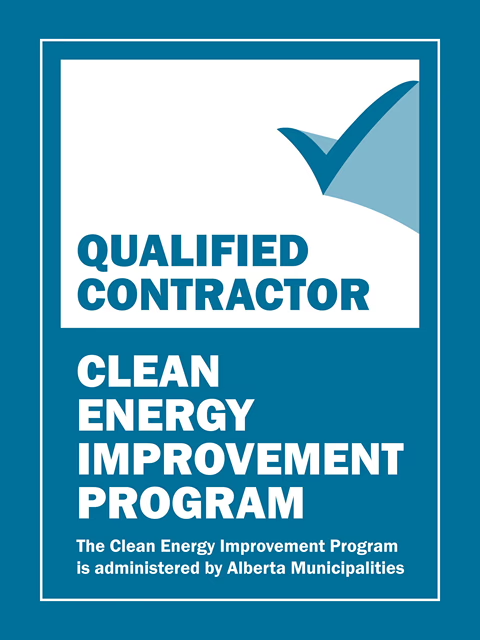As Calgary homeowners, we often overlook what’s behind our walls – until there’s a problem. One such hidden danger lurking in many Calgary homes built between 1985 and 1997 is Poly B piping. At Harper’s Plumbing, we’ve seen firsthand the devastating effects of Poly B failures, and we’re here to shed light on this critical issue.
Understanding Poly B Piping
Poly B, short for Polybutylene, was widely used in residential plumbing systems from the mid-1980s to the late 1990s. Initially celebrated as a cost-effective alternative to copper, it has since shown significant drawbacks:
- Chlorine Sensitivity: Poly B can degrade when exposed to chlorine over time.
- Cracks and Leaks: It has a tendency to develop microscopic cracks that can lead to major issues.
- Unexpected Failures: These pipes can burst with little warning, causing extensive damage.
Poly B pipes were marketed as “the pipe of the future” due to their low cost, flexibility, and ease of installation. However, this promise quickly turned into a nightmare for many homeowners.
The Fall of Poly B
Poly B’s reputation began to crumble in the mid-1980s when insurance companies noticed a pattern of leaks emerging in homes with polybutylene piping. By 1995, most tradespeople had stopped using the material in residential construction. The situation became so severe that in 1997, Poly B was banned by the National Plumbing Code, which oversees plumbing trades in Canada.
The final nail in the coffin came in 2005 when the NRC-CNRC National Plumbing Code and the Government of Canada officially removed Poly B from the list of acceptable plumbing piping materials. As a result, typically only homes built between 1978 and 1995 have polybutylene piping installed.
This rapid fall from grace was due to several factors:
- Frequent leaks and pipe failures
- Susceptibility to damage from chlorine in water systems
- Degradation when exposed to high temperatures
The issue became so widespread that a $1 billion class action lawsuit was settled in the USA, covering the cost of replacing Poly B systems in 320,000 homes. This legal action underscores the severity of the problems associated with Poly B piping and the significant financial impact on homeowners and the construction industry.
The Risks of Waiting
Many homeowners are unaware they have Poly B until it’s too late. A single pipe failure can lead to:
- Water Damage: Resulting in costly repairs and significant disruption.
- Mold Growth: Even small leaks can create conditions for mold to thrive behind walls.
- Structural Issues: Over time, leaks can compromise your home’s integrity.
Insurance and Resale Challenges
Square One Insurance highlights several challenges associated with homes that have Poly B piping:
- Insurance Difficulties: Many insurers now require replacement of Poly B or charge higher premiums for homes with this piping. Some may even deny coverage altogether.
- Resale Issues: Homes with Poly B are becoming harder to sell or may sell at a discount. Square One advises that it’s crucial to know what type of plumbing is in your home before buying or seeking insurance.
- High Deductibles: Claims related to Poly B might face high deductibles, leaving homeowners with substantial out-of-pocket expenses.
Why 2024 is the Year to Act
- Age Factor: Most Poly B installations in Calgary are now 25-35 years old – well beyond their expected lifespan.
- Increasing Risk of Leaks: Square One reports that “Poly-B piping begins to leak around 10 to 15 years after installation,” meaning any existing Poly B is likely already at risk.
- Protect Your Investment: Replacing Poly B now may help safeguard your home’s value and insurability.
The PEX Solution
At Harper’s Plumbing, we recommend replacing Poly B with PEX (Cross-linked Polyethylene) piping for several reasons:
- Durability: PEX is designed for longevity and reliability.
- Freeze Resistance: It performs better under freezing conditions than Poly B.
- Cost-Effective Installation: Our team ensures a smooth replacement process.
- Flexibility: PEX can be easily integrated into your existing plumbing system.
What to Expect During Replacement
Our experienced team at Harper’s Plumbing has streamlined the replacement process:
- Thorough inspection and planning
- Careful removal of existing Poly B pipes
- Installation of new PEX piping with minimal disruption
- Comprehensive testing to ensure perfect functionality
Invest in Your Home’s Future
Replacing your Poly B piping is not just about avoiding future problems; it’s an investment in your home’s future. While we can’t guarantee specific outcomes, many homeowners find potential benefits such as:
- Improved insurability
- Possible reductions in insurance costs
- Enhanced marketability if you decide to sell
Don’t wait for a plumbing disaster or insurance complications!
Contact Harper’s Plumbing today for a consultation on replacing your Poly B piping.
Let’s work together to keep your home safe and sound!







